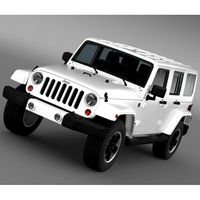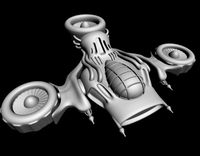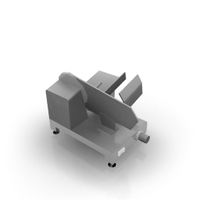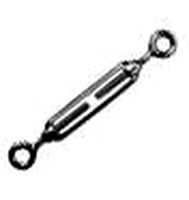GrabCAD

Barracuda (hovering device)
by GrabCAD
Last crawled date: 1 year, 10 months ago
The Flying Car Era
The flying car era will really begin around 2015 with flying drones. Flying drones will be used by FedEx and UPS to deliver packages, Pizza Hut to deliver pizzas, and Kroger and Safeway to deliver groceries. But beyond that, drones will enable homes to be taken off the grid with delivery of water and electricity (changing out batteries for the home), trash and sewage pickup, and much more. These too will begin as air-powered vehicles and later convert to frictionless drones.
Six key technological breakthroughs will be needed for the first generation of flying cars to become viable – the fully automated navigation systems, directional layering of airspace, low-impact vertical take-off, convenient fly-drive capability, silent engines, and specialized safety systems.
Fully automated navigation systems – The average person has a difficult time navigating on a two dimensional surface. The flying car industry will not be able to “get off the ground” without an onboard navigator that “handles the driving”. Yes, people will want the freedom of being able to do some creative maneuvering in certain situations, but that will only be allowed in rare instances.
Directional layering of airspace – With several hundred thousand vehicles flying over a city, there will need to be an organized system for managing the traffic, and having all vehicles at a particular altitude traveling the same direction would eliminate many problems. For example, all vehicles traveling at 1,000 ft altitude would be traveling due north, at 1,010 ft altitude 1 degree east of due north, 1,020 ft altitude 2 degrees east of due north, etc. Vehicles would spiral up or down to make their turns. While not a perfect solution because the North Pole becomes a crash point for those flying due north, it does represent a good starting point for engineering a solution.
Low-impact vertical take-off – For use by the average person, flying cars cannot have a runway requirement. They need to take off and land vertically without blowing the leaves off of trees or shutters off your house.
Convenient fly-drive capability – As humanity makes the transition from ground-based autos to flying cars there will be a need for both driving on the ground and flying in the air.
Silent engines – Very few cities will want to put up with the noise of several hundred thousand flying vehicles if they all sound like airplanes today.
Specialized safety systems – To date both aircraft and airspace have been closely controlled by organizations like the FAA and the NTSB to insure the safety of the flying public. Because of the sheer volume of vehicles and the lower caliber of individuals allowed to fly, additional safety measures will have to be in place. Safety technologies will include collision avoidance systems and drop-out-of-the-sky emergency airbags on the outside of vehicles.
The flying car era will really begin around 2015 with flying drones. Flying drones will be used by FedEx and UPS to deliver packages, Pizza Hut to deliver pizzas, and Kroger and Safeway to deliver groceries. But beyond that, drones will enable homes to be taken off the grid with delivery of water and electricity (changing out batteries for the home), trash and sewage pickup, and much more. These too will begin as air-powered vehicles and later convert to frictionless drones.
Six key technological breakthroughs will be needed for the first generation of flying cars to become viable – the fully automated navigation systems, directional layering of airspace, low-impact vertical take-off, convenient fly-drive capability, silent engines, and specialized safety systems.
Fully automated navigation systems – The average person has a difficult time navigating on a two dimensional surface. The flying car industry will not be able to “get off the ground” without an onboard navigator that “handles the driving”. Yes, people will want the freedom of being able to do some creative maneuvering in certain situations, but that will only be allowed in rare instances.
Directional layering of airspace – With several hundred thousand vehicles flying over a city, there will need to be an organized system for managing the traffic, and having all vehicles at a particular altitude traveling the same direction would eliminate many problems. For example, all vehicles traveling at 1,000 ft altitude would be traveling due north, at 1,010 ft altitude 1 degree east of due north, 1,020 ft altitude 2 degrees east of due north, etc. Vehicles would spiral up or down to make their turns. While not a perfect solution because the North Pole becomes a crash point for those flying due north, it does represent a good starting point for engineering a solution.
Low-impact vertical take-off – For use by the average person, flying cars cannot have a runway requirement. They need to take off and land vertically without blowing the leaves off of trees or shutters off your house.
Convenient fly-drive capability – As humanity makes the transition from ground-based autos to flying cars there will be a need for both driving on the ground and flying in the air.
Silent engines – Very few cities will want to put up with the noise of several hundred thousand flying vehicles if they all sound like airplanes today.
Specialized safety systems – To date both aircraft and airspace have been closely controlled by organizations like the FAA and the NTSB to insure the safety of the flying public. Because of the sheer volume of vehicles and the lower caliber of individuals allowed to fly, additional safety measures will have to be in place. Safety technologies will include collision avoidance systems and drop-out-of-the-sky emergency airbags on the outside of vehicles.
Similar models
grabcad
free

Bottles delivering
...e with the drone flying at the height of your body...
with drones biggest the tray would be biggest and can deliver more things..
grabcad
free

Frontal chaises support
...l chaises support
grabcad
car vehicle safety feature suspension system design for on the way driving car bumper crashing safety.
3dwarehouse
free

Flying Car
...off and landing vehicle would you need to, or want to drive on the roads any longer? #aircraft #airplane #car #flying #flying_car
3dwarehouse
free

NASA UAV Drone
...is capable of flying 3,000 nautical miles, at an altitude of 45,000 ft. used by nasa for experimental purposes. #drone #nasa #uav
cg_trader
free

Modular Drone
... travel through water as well, if necessary. with land, air, and sea covered, there is no need for any other un-manned companion.
cg_trader
free

DroneCar
...rone car future fan glossy shader vehicul transport fly flight turbine reactor energy aircraft jet vehicles future car future car
grabcad
free

Automated Vehicle wash system
...ild for a cleaning the vehicles from all the 4d directions. it is designed in such a way that not a single spot is left unwashed.
3d_ocean
$85

Jeep Wrangler Unlimited Altitude 2014
...tude 2014 (the jeep wrangler is a compact four-wheel drive off-road and sport utility vehicle (suv), manufactured by american ...
3d_ocean
$85

Jeep Wrangler Unlimited Altitude 2012
...tude 2012 (the jeep wrangler is a compact four-wheel drive off-road and sport utility vehicle (suv), manufactured by american ...
3dwarehouse
free

Showing the Heavy Lift Drone and its landing struts
... off from a sitting position on the ground and to reverse the sequence to bring itself from flying around to landed on the ground
Barracuda
turbosquid
$4

Barracuda
...osquid
royalty free 3d model barracuda for download as blend on turbosquid: 3d models for games, architecture, videos. (1388672)
turbosquid
$199

Barracuda
... available on turbo squid, the world's leading provider of digital 3d models for visualization, films, television, and games.
turbosquid
$90

Barracuda
... available on turbo squid, the world's leading provider of digital 3d models for visualization, films, television, and games.
turbosquid
$15

barracuda
... available on turbo squid, the world's leading provider of digital 3d models for visualization, films, television, and games.
3d_ocean
$10

Barracuda
...sub submarine under underwater
low polygon and nicely detailed generic submarine/flying car. check out my profile for more items!
turbosquid
$50

barracuda.3ds
... available on turbo squid, the world's leading provider of digital 3d models for visualization, films, television, and games.
3d_export
$20

Barracuda 3D Model
...ub submarine marine under starship star ship spaceship aircraft jet attacker fighter
barracuda 3d model heartbreak 58674 3dexport
cg_studio
$45

Barracuda UCAV3d model
...barracuda ucav3d model
cgstudio
.max - barracuda ucav 3d model, royalty free license available, instant download after purchase.
3d_export
$5

barracuda fish low poly
...barracuda fish low poly
3dexport
3d_export
$5

Killer Barracuda 3D 3D Model
...da 3d killer fish toon cartoon monster shark sea scuba diving animal jaws
killer barracuda 3d 3d model supercigale 24645 3dexport
Hovering
3d_export
$6

the hover tank
...the hover tank
3dexport
turbosquid
$8

Hover Tank
...bosquid
royalty free 3d model hover tank for download as fbx on turbosquid: 3d models for games, architecture, videos. (1298416)
turbosquid
$2

Hover Ship
...
royalty free 3d model hover ship for download as c4d and fbx on turbosquid: 3d models for games, architecture, videos. (1603383)
turbosquid
$298

Hovering Bomber
... available on turbo squid, the world's leading provider of digital 3d models for visualization, films, television, and games.
turbosquid
$35

Hover Tank
... available on turbo squid, the world's leading provider of digital 3d models for visualization, films, television, and games.
turbosquid
$30

Hover Speedster
... available on turbo squid, the world's leading provider of digital 3d models for visualization, films, television, and games.
turbosquid
$10

Hover Bike
... available on turbo squid, the world's leading provider of digital 3d models for visualization, films, television, and games.
turbosquid
$5

Hover Holder
... available on turbo squid, the world's leading provider of digital 3d models for visualization, films, television, and games.
turbosquid
free

Hover Board
... available on turbo squid, the world's leading provider of digital 3d models for visualization, films, television, and games.
3d_export
$15

Hover Hummer 3D Model
...hover hummer 3d model
3dexport
hummer humvee military sci-fi army vehicle hover
hover hummer 3d model dr.sleep 32128 3dexport
Device
3ddd
$1

device
...device
3ddd
device
3ddd
$1

device
...device
3ddd
device
archive3d
free

Device 3D Model
...device 3d model
archive3d
equipment device
device- 3d model for interior 3d visualization.
archive3d
free

Device 3D Model
... model
archive3d
device
device n050608 - 3d model (*.gsm+*.3ds) for interior 3d visualization.
archive3d
free

Device 3D Model
...e 3d model
archive3d
device gear
device - 3d model (*.gsm+*.3ds) for interior 3d visualization.
3d_export
$5

rope tighten device
...rope tighten device
3dexport
rope tighten device
3d_export
$5

front clamping device
...front clamping device
3dexport
front clamping device
archive3d
free

Device 3D Model
...e3d
device kitchen ware
device n130208 - 3d model (*.gsm+*.3ds) for interior 3d visualization.
3d_ocean
$5

Google Chromecast device
...romecast device. if you want to know more about this device, please check url : http://www.google.com/chrome/devices/chromecast/
turbosquid
$7

Hearing Device
...alty free 3d model hearing device for download as obj and c4d on turbosquid: 3d models for games, architecture, videos. (1374371)
